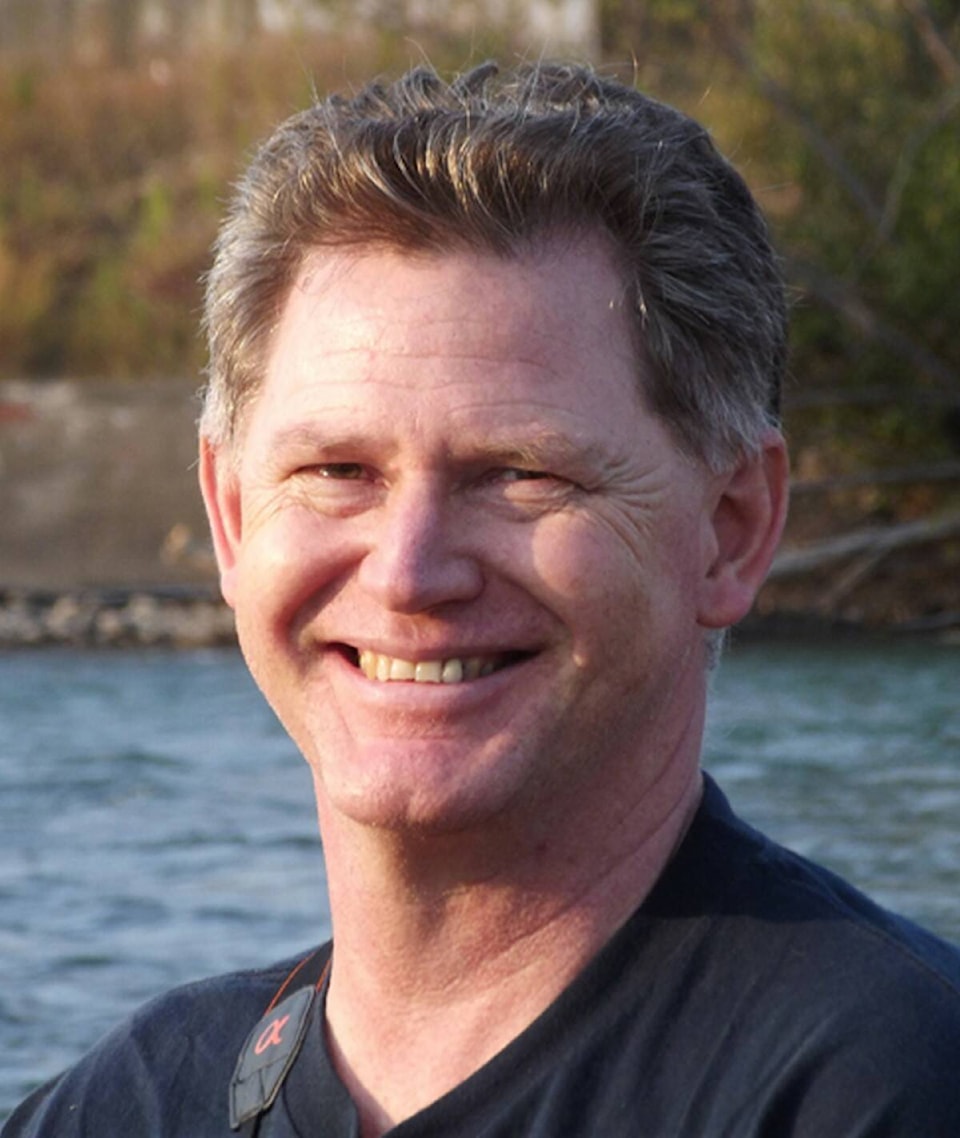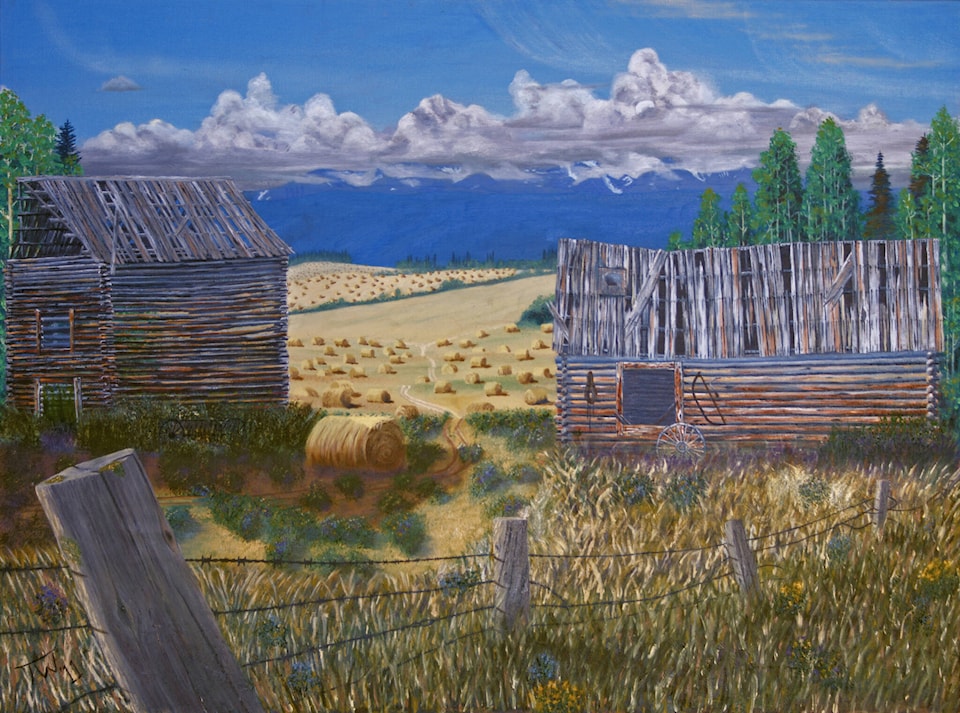Born and raised in the Bulkley Valley, Ted Widen is preserving history through a popular Facebook group.
Ted was born in Smithers in 1958. He first became devoted to unraveling the region’s past, offline. Ted learned to paint a little over 20 years ago, when he was taught by his wife, an experienced artist.
“I’ve painted several scenes of the valley and some historic scenes of the valley. And I certainly expect to do more of those,” said Ted.
Ted makes sure his paintings are historically accurate, collecting information from old photos and archives.
In 2013, the Smithers Art Gallery held a centennial celebration, during which artists were asked to create a painting featuring a specific year from the past century. Ted chose 1914 and painted the arrival of the first train from the east.
“I used four photos from the Bulkley Valley Museum to make an image that would include the first train station in Smithers,” explained Ted.
The painting features a “photographer in the foreground [that] represents the few people who had cameras to document events back then.”
Ted’s interest in the Bulkley Valley’s history began as a child. His father would speak of his ancestry, with tales of early settlers, Indigenous communities and the mountainous landscapes that shaped the valley.
Smithers is a railroad town, explained Ted. It was settled and zoned for commercial property in 1913, but the history of the region dates far beyond colonization.
“Some miles outside, there’s kind of a little farming community south of Houston. And my grandfather from Sweden had taken up preemption there,” explained Ted.
Preemption was a government policy by which people could acquire Crown land by agreeing to settle and work it.
After living in the valley for a while, Ted’s grandfather decided he wanted to get married.
“He traveled from the Buck Flats area outside of Houston, all the way to Hazleton, to talk to a priest and let him know that he’s looking for a wife,” said Ted.
The priest introduced Ted’s grandfather to his grandmother, a woman with mixed Indigenous and European ancestry.
“She was deemed to be the best fit for my Swedish grandfather to marry.”
“My heritage goes back as far as Europeans do in the valley. And on the Aboriginal side of things, turns out I actually go back thousands of years.”
In the 1800s, the first Hudson’s Bay trading posts were set up in the Skeena region. Which is where Ted’s great-grandfather and great-grandmother met.
Thomas Hankin, who has several streets named after him in the region, was one of the first to arrive at the post. His son came with him and ended up with an Indigenous woman.
Ted’s grandmother was born from the relationship, but she grew up to face hardship due to her mixed-identity.
“We found that the racism against the native people back in those days was very widespread. Very prominent, expected and normal,” explained Ted. “We’re only just at the tail end of it.”
Wanting to share his love for storytelling, and his appreciation for his own ancestry, Ted started the Bulkley Valley History Facebook group. The group quickly became a space where people bonded over sharing historical photos and anecdotes.
When Ted first started the group in 2021, he had a goal of reaching 200 members. Two years later, membership is at 3,700.
“This is a place for people to share stories to celebrate the past,” said Ted. “The way it’s grown has been astounding.”
By adapting to the changing digital landscape, Ted has been able to make history accessible to a wide audience.
“We’ve got a lot of young people. And by that, I mean people in their teens and 20s, my own kids’ age,” explained Ted.
“This group has been amazing at filling in information,” he said. “Just yesterday, somebody found an old picture of a native lady sitting outside of a log cabin and the person who posted it wasn’t certain who this person was.”
Through the Bulkley Valley History group, members can discover information about their own heritage that might otherwise be lost.
What began as a passion project for Ted, has now expanded into an important resource for the community, with a group of four administrators and a well-thought-out moderation policy.
Posts have to reference people or events that are over 40 years old, with exceptions for landmark events. They also have to fall within certain geographical criteria.
Many of the posts reference sensitive themes, such as Indigenous/settler relations and the early presence of Chinese merchants.
Moderators make sure to remove any remarks that are racist or offensive, to make sure the group is a safe space for everyone.
In addition to administrating the Facebook group, Ted is currently working on publishing a book with Tim Boersma, who ran the Telkwa Museum for decades.
“With all the information I was gathering from the old newspapers and photos, I started to put together the Chronicle of Telkwa’s Early Years,” he explained.
Ted has collected several archives of the Bulkley Valley over the years, including clippings from The Interior News that date back more than 100 years.
The book is nearing completion, but as Ted waits on approvals and editing, he will be busy finishing the painting.
“I’ve only recently gotten back to trying to work on my painting,” said Ted. “The amount of detail that I know now is making this picture very hard to paint.”

